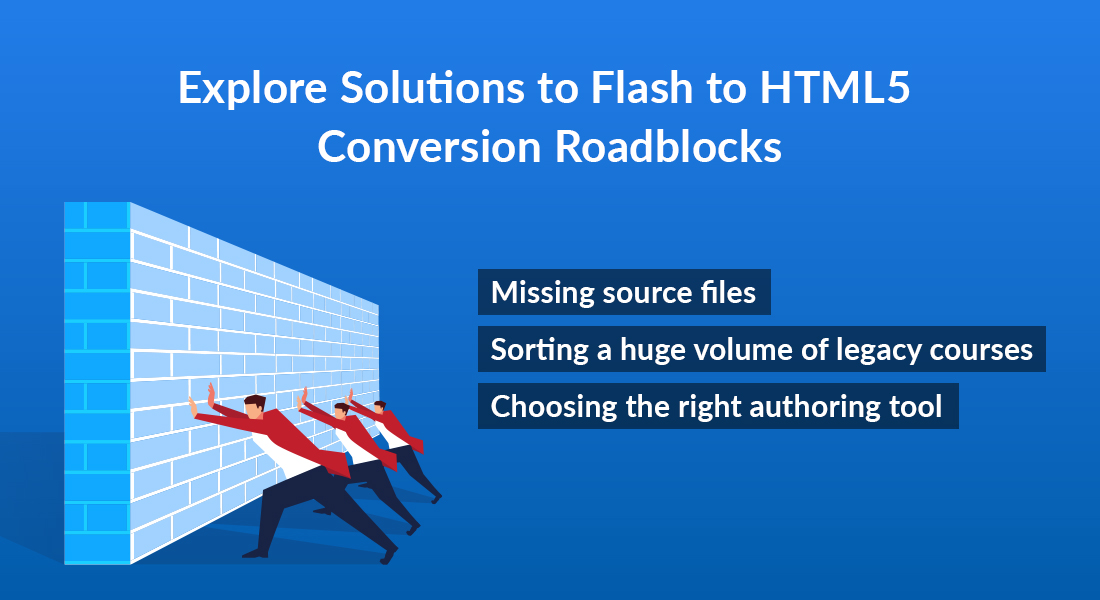6 Visual Design Secrets of Successful E-learning

It is a well-known fact that visual design of high quality plays a key role in the creation of good online learning materials. Effective graphic design goes a long way in providing excellent learning experiences and helps comprehend the content of an e-learning course better. It reduces cognitive load on learners, by complementing textual content. Proper use of visual elements helps convey complex topics easily, provides a uniform, consistent look to the course, and reinforces the organization’s brand identity.
How can you come up with a good visual design strategy for your web-based training resource? What are the aspects you need to consider to ensure that the graphic elements in your e-learning course improve the aesthetic profile of your online course and help your staff members learn well? You need to focus on 6 vital aspects.
1. Use images that are relevant to the content
It is a fact that images help enhance the efficacy of your online course. However, you need to be careful to avoid visual elements that do not add instructional value to your e-learning course. Make sure the visual design components of your web-based training material are relevant to the content presented in it and help achieve its learning objectives. You need to remember that using graphic elements merely to “decorate” an online course and fill in the white spaces helps little to make the course effective.
2. Make the best use of colors
Proper use of colors plays a key role in designing an effective e-learning course because they can affect the mood of learners. So, you must use appropriate colors to produce the desired results. For example, use Red to draw attention and point out the key onscreen elements. You can also use the color to highlight negative aspects, such as the disadvantages, limitations, or don’ts of something.
On the other hand, go for Green in the user interface of the web-based learning resource to give it a refreshing, peppy look. Make sure that the colors you use are in line with your visual style guide and reflect your brand identity. Check the insightful post How do Colors Impact eLearning Design and Learning? to know more about the impact of colors on the efficaciousness of technology-enabled learning resources.
3. Go for large, clear fonts in your online courses
This is a very important, yet unfortunately often overlooked aspect of e-learning visual design. The fonts you use must be large and legible, and learners should not have any problems reading the text in your online course. It is advisable to go for fonts such as Times New Roman and Arial as they are clearly visible.
4. See that you use contrasting visual elements
Don’t be afraid to use contrasting colors, shapes, and images in the design of your technology-enabled learning content. The human eye loves contrast and these graphical elements help hold the attention of learners. Furthermore, using contrasting colors enables you to highlight important points easily.
5. Include white spaces in your e-learning course
Whitespaces are a critical element of good e-learning visual design. Many designers of online learning materials often make the mistake of leaving little whitespace in their online courses. Good use of whitespaces helps designers of web-based instructional materials to present content in a nice, simple, and elegant way. Using whitespaces helps un-clutter the learning content and make reading easier, thereby delivering enjoyable learning experiences.
6. Remember to use Scaled Vector Graphics (SVGs)
The desktop computer no longer holds the monopoly over the online world. Today, people use a wide variety of tablets and smartphones to access online materials including e-learning courses. So, it is important to ensure that the graphics you use are clearly visible on all devices. It is advisable to use SVGs in your technology-enabled learning content. These images scale up according to the size of the screen, and thereby appear clearly on the screens of all devices.
Proper use of visuals goes a long way in presenting the content effectively and helps enhance the look and feel of your online course. Follow the tips listed above to come up with a good visual design strategy for your online instructional resources.



![Flash to HTML5 Conversion: Problems and Solutions [SlideShare]](https://blog.commlabindia.com/hubfs/Imported_Blog_Media/flash-html5-conversion-problems-solutions-slideshare.jpg)

